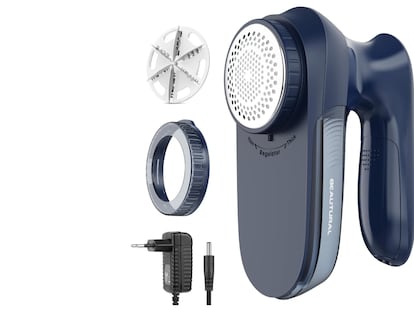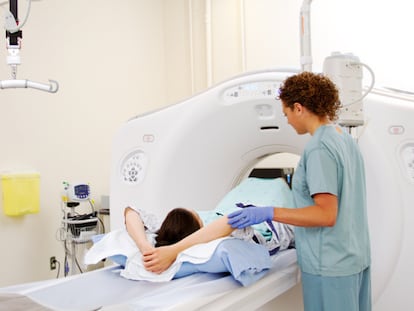What every man needs to know about prostatic intraepithelial neoplasia
Each year around 16% of men who undergo a prostate biopsy will find out they have PIN, a precancerous condition of prostate cancer

Whenever a man has his prostate biopsied, the tissue samples removed from the prostate will be reviewed by a pathologist. The pathologist will look under a microscope for changes in the prostate gland cells that could indicate prostate cancer. Instead of prostate cancer, a pathologist may find abnormal cells growing in other parts of the prostate gland. This could indicate a condition called prostatic intraepithelial neoplasia, or PIN for short. PIN is a condition in which cells from the prostate begin to look and behave abnormally. Each year around 16% of men who undergo a prostate biopsy will find out they have PIN, which is essentially a precancerous condition of prostate cancer.
Where PIN begins
PIN abnormal cells begin and are located in two different areas of the prostate ¨C one area is called acini, which is the lining of tiny sacs that give the prostate its sponge-like appearance. These same sacs are responsible for producing the fluid that is mixed together with sperm, helping to create semen.
The second area where PIN may be found is in the lining of the ducts that carry this fluid to the main ejaculatory duct that reaches the penis.
As PIN develops, the epithelial cells lining the acini and the ducts look abnormal ¨C even though the lining itself remains intact. This is different from prostate cancer in which the epithelial lining ruptures and the malignant cells penetrate into the tissue of the prostate gland.
How is PIN different from prostate cancer?
There are various differences between PIN and prostate cancer. One difference is that it cannot be detected during a digital rectal exam. Another difference is that PIN does not cause PSA levels to rise as prostate cancer would. It is diagnosed either during a prostate biopsy or when a treatment for benign prostatic hyperplasia ¨C called transurethral resection of the prostate (TURP) ¨C is performed, and prostate tissue is removed.
When this condition is discovered, it is given a grade of either low-grade PIN or high-grade PIN. Low-grade PIN does not increase a manˇŻs risk of prostate cancer as the abnormal cells are only slightly different from normal cells.
High-grade PIN however, could increase the risk as the abnormality of the cells is more pronounced than in low-grade PIN. This makes it more likely that high-grade PIN could lead to prostate cancer.
One reason for the increased risk is that high-grade PIN is usually found in the peripheral zone of the prostate where most cases of prostate cancer start. Another reason is that 82% of prostate specimens with cancer also had areas of high-grade PIN while only 43% of those without prostate cancer. A third reason is that men with high-grade PIN have an increased risk for prostate cancer during a follow-up biopsy when compared to men with low-grade PIN or normal tissue.
Options for men with high-grade PIN
Because of the danger of high-grade PIN and the possible increased risk of it going on to develop into prostate cancer, doctors are often divided on what to recommend when it is discovered.
Some doctors may recommend blood tests for PSA, which is the standard prostate cancer screening test, a digital rectal exam, transrectal ultrasound, and looking into a patientˇŻs family history of prostate cancer to evaluate the risk of progression. But the issue with this is the test does not reliably help identify men who have high-grade PIN and who will go on to develop prostate cancer.
This leaves open other options that a doctor may recommend after diagnosing a man with PIN. This might include a follow-up biopsy in three to six months or in six to 12 months or in three years. Doctors who want to keep an extra close eye on high-grade PIN may recommend multiple biopsies done every three to six months for two years and then annually for life.
There is no one-size-fits-all process for men with high-grade PIN. If a man is diagnosed with high-grade PIN, he should maintain a close working relationship with his doctor to determine the best way to manage it, using a thorough evaluation of his risk profile to decide when a second biopsy should be done.
Remember, high-grade PIN is not the same thing as prostate cancer ¨C there is time to decide the course of action to take and in the meantime, look ahead to new treatment options in the future.
Dr. Samadi is a board-certified urologic oncologist trained in open and traditional and laparoscopic surgery and is an expert in robotic prostate surgery. He is chairman of urology, chief of robotic surgery at Lenox Hill Hospital. He is a medical contributor for the Fox News Channel's Medical A-Team. Follow Dr. Samadi on Twitter, Instagram, Pinterest, SamadiMD.com, davidsamadiwiki, davidsamadibio and Facebook
Tu suscripci¨®n se est¨˘ usando en otro dispositivo
?Quieres a?adir otro usuario a tu suscripci¨®n?
Si contin¨˛as leyendo en este dispositivo, no se podr¨˘ leer en el otro.
FlechaTu suscripci¨®n se est¨˘ usando en otro dispositivo y solo puedes acceder a EL PA?S desde un dispositivo a la vez.
Si quieres compartir tu cuenta, cambia tu suscripci¨®n a la modalidad Premium, as¨Ş podr¨˘s a?adir otro usuario. Cada uno acceder¨˘ con su propia cuenta de email, lo que os permitir¨˘ personalizar vuestra experiencia en EL PA?S.
En el caso de no saber qui¨¦n est¨˘ usando tu cuenta, te recomendamos cambiar tu contrase?a aqu¨Ş.
Si decides continuar compartiendo tu cuenta, este mensaje se mostrar¨˘ en tu dispositivo y en el de la otra persona que est¨˘ usando tu cuenta de forma indefinida, afectando a tu experiencia de lectura. Puedes consultar aqu¨Ş los t¨¦rminos y condiciones de la suscripci¨®n digital.


































































